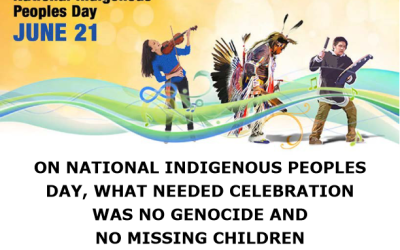Hidden behind rhetoric over Aboriginal funding mechanisms and audit requirements are the vulnerable individuals falling between the cracks.
Ensuring that spending is going toward the programs that actually benefit First Nations directly should be the priority.
Once again, Sheila Fraser, the Auditor-General of Canada, wrote an indictment of First Nation financial arrangements. In her 2008 report, she said First Nation child and family services are not receiving the funds they need, and there is also no assurance the money is going toward the children and families it is supposed to help.
She calls upon the government to reform the system so that families in need are better served.
Unfortunately, this is not the first time she made this appeal. In her 2002 report, she called for urgent reforms to First Nation financial reporting. Back then, the money designated for services did not translate into tangible results.
The problem is that First Nations lack the necessary financial controls that ensure government funding for programs actually reaches the intended target areas. This issue is deeper than simple financial reporting.
When I was editor of an Aboriginal newspaper in Winnipeg, I witnessed these problems regularly. Ordinary band members would send me envelopes containing receipts and financial reports that showed money was being diverted inappropriately.
In one case, a band council was funnelling money designated for education toward the community’s debt. Debt reduction is good, but this created problems that down the school for a time, because the band could not pay the teachers. In another case involving a Manitoba First Nation, an incumbent chief was indicted for diverting the community’s Special Needs program funds toward purchasing appliances and furniture to curry favour with voters.
Fortunately, First Nation leaders are noticing these disturbing trends, and they want to take action. In a report by the Congress of Aboriginal Peoples (CAP) that was released in January of 2008, an argument is made for changing the way funding is allocated to Aboriginal governments and organizations. “Where does the money go?” traced 6,199 federal grants and contributions to 2,054 recipients across 30 federal departments and agencies. In its review, CAP looked at $5.6-billion in federal government contributions, which represent only half of the total annual spending on Aboriginal organizations.
CAP began this project after the federal government announced in 2005 its intention to proactively disclose information on grants and contributions over $25,000. CAP evaluated the 2006-2007 fiscal year.
One scandalous observation is that more than 120 separate searches were needed to find out anything about one Aboriginal organization and how it was funded. Obviously, the government needs to streamline this feature so that one source lists all grants and contributions.
This, of course, pales in comparison with the finding that $4‑billion of the $10‑billion spent on Aboriginal programs could not be identified through this system. Much of this spending could possibly be tracked through federal transfers to the provinces, which, unfortunately, do not fall under disclosure requirements.
Under these conditions, it is impossible to see the big picture when it comes to spending on Aboriginal programs. Spending is so dispersed throughout the system that tracking it is impossible. Centralizing this system is essential before the government or individuals can discover if the money is going toward the programs it is intended to fund. Once this is achieved, it will be easier to measure actual results. Chief Patrick Brazeau of CAP argued that to achieve transparency, all spending information should be streamlined and centralized and be readily available to First Nations and taxpayers. Being exempt from access to information laws prevents First Nation spending from being identified and measured.
The Treasury Board said that in 2003-2004 over 30 agencies and departments were involved in disbursing funds to Aboriginal governments and organizations. This makes it that much more difficult to follow the money trail and to measure results.
In analyzing this system of “proactive disclosure,” CAP discovered barriers to transparency. First was the requirement that only funding over $25,000 be disclosed. This means total grants and contributions to a specific department cannot be matched against actual parliamentary appropriation. Moreover, organizations that deal with Aboriginals such as the Canada Mortgage and Housing Corporation are not subject to disclosure.
In other instances, confusions about in which fiscal year a specific transfer actually applied also prevented true disclosure, as did multi‑year reporting requirements and so‑called batched reporting, which involves funding agreements that do not allow one to see in which areas spending is occurring. Third-party distributions also created problems. This occurs where a recipient redistributes the funds to organizations on behalf of the government. It is difficult to tell how many recipients there are and who they are.
It is obvious that efficient financial controls must be targeted at the band level. According to CAP’s report, about 67 per cent of total government grants and contributions ($3.7 billion) are disbursed directly to band councils. which are the social and education service providers to First Nations. The second-largest recipients are bodies created or mandated by band councils to serve on‑reserve populations. This includes tribal councils as well as First Nation health, education and social service agencies.
Despite arguments that the government is not doing enough for First Nation health and education, the statistics show this is where most of the money is going. Questions inevitably arise as to how the money is being spent. Rather than focus on audits and reporting, the government should aim for results-in-spending. First Nations need to show that their expenditures are meeting target areas.
Once that happens, the government can clean up the mess that is First Nation funding disclosure.


